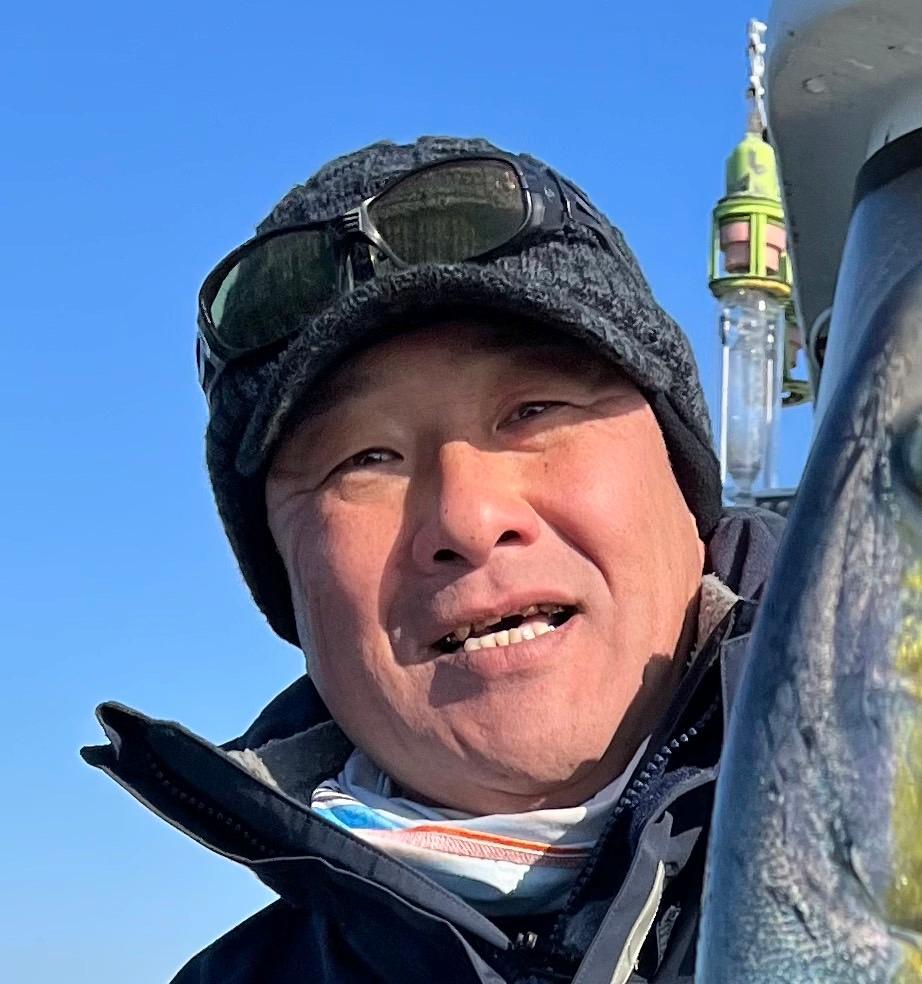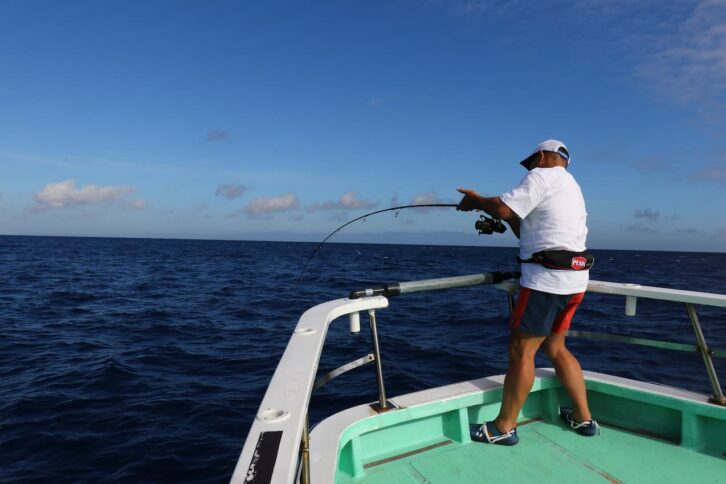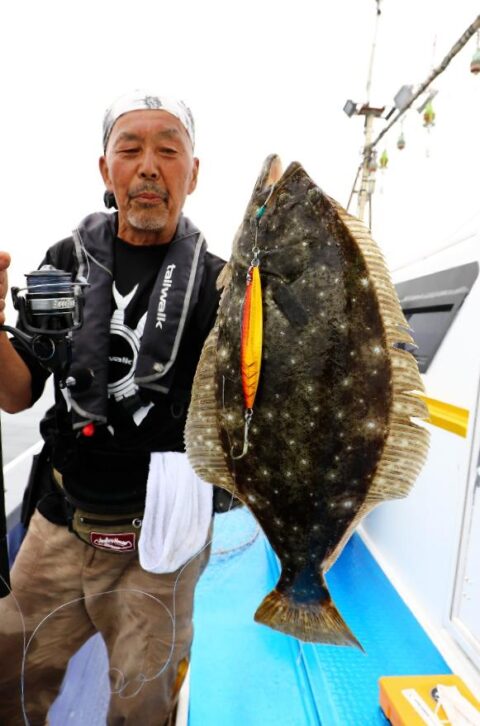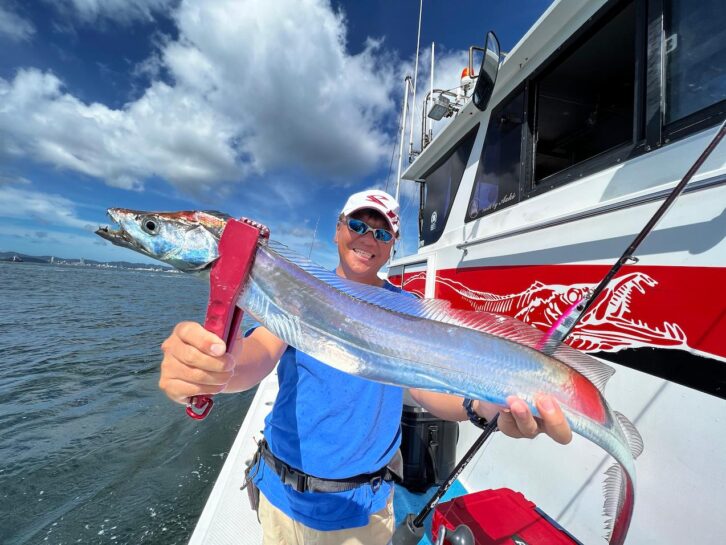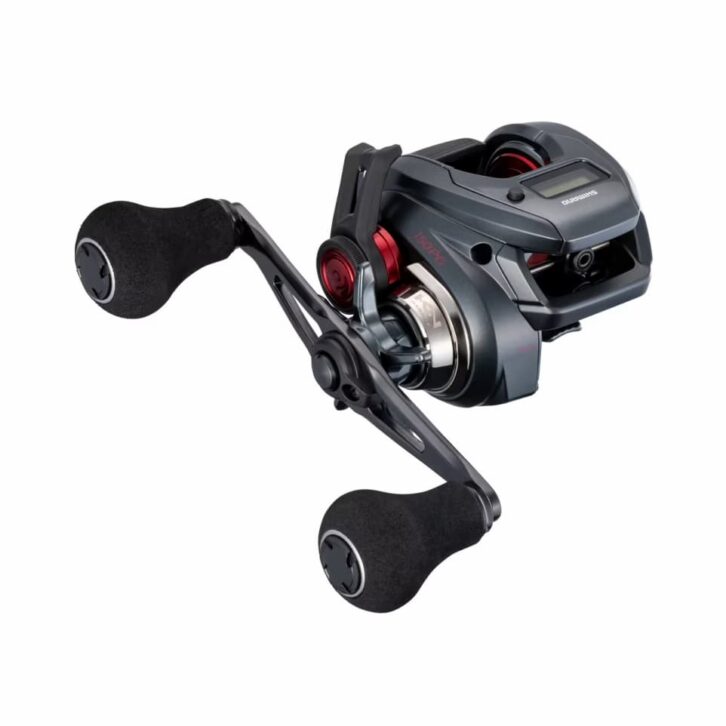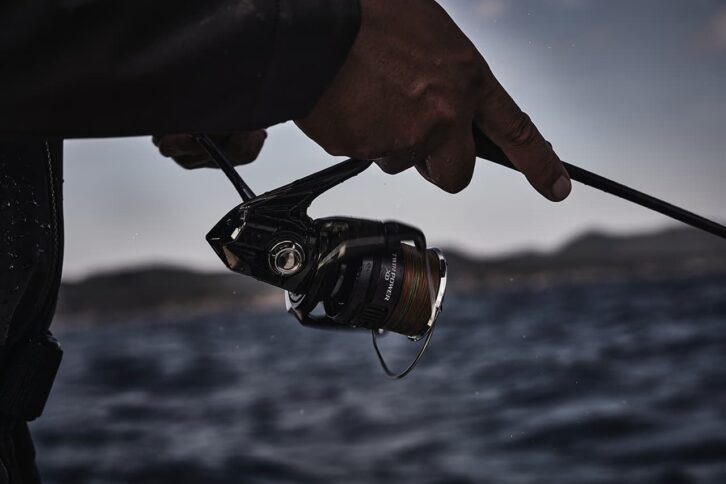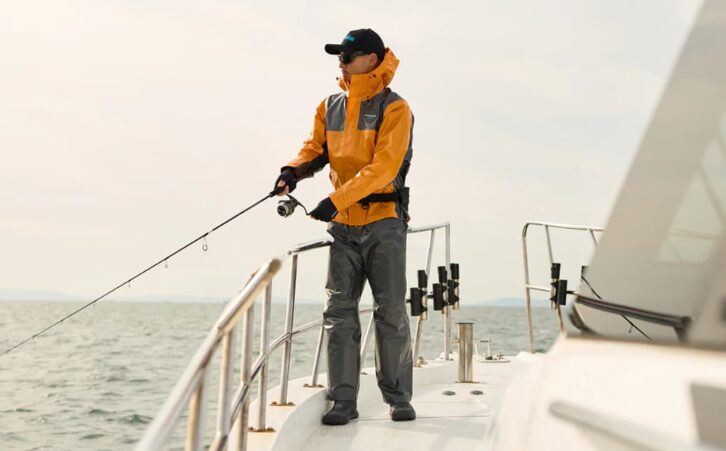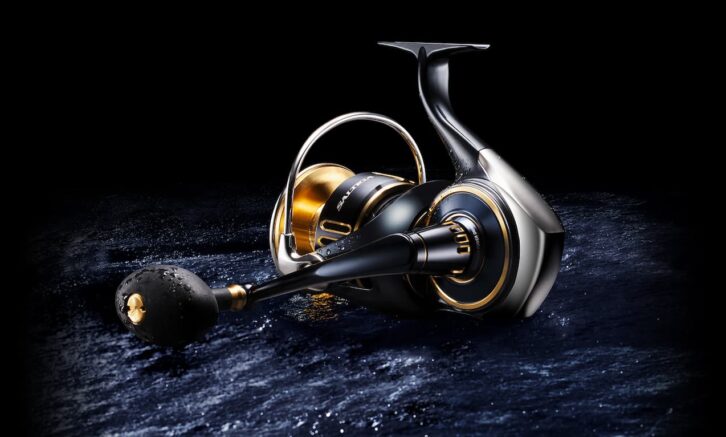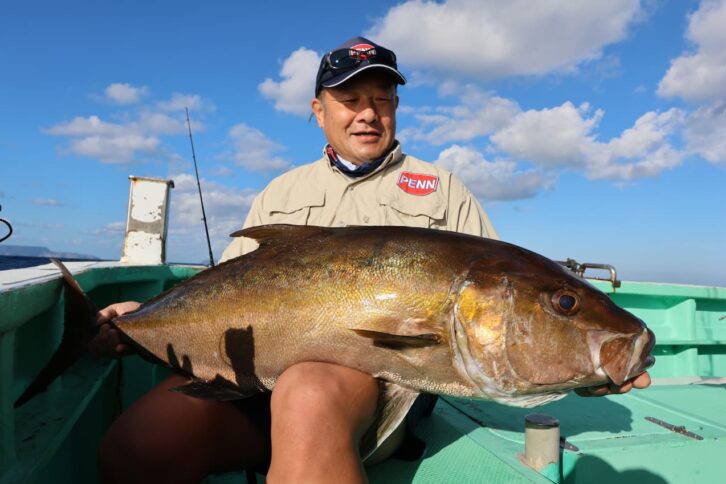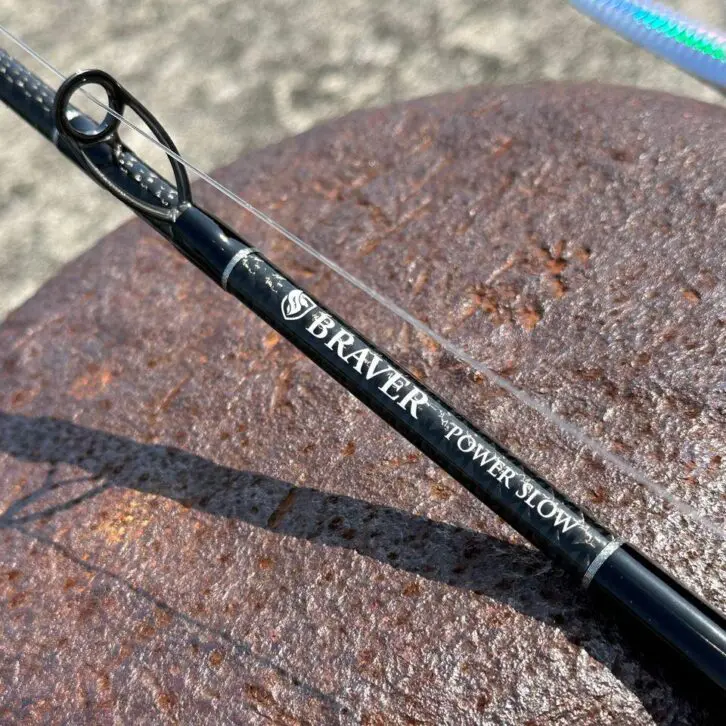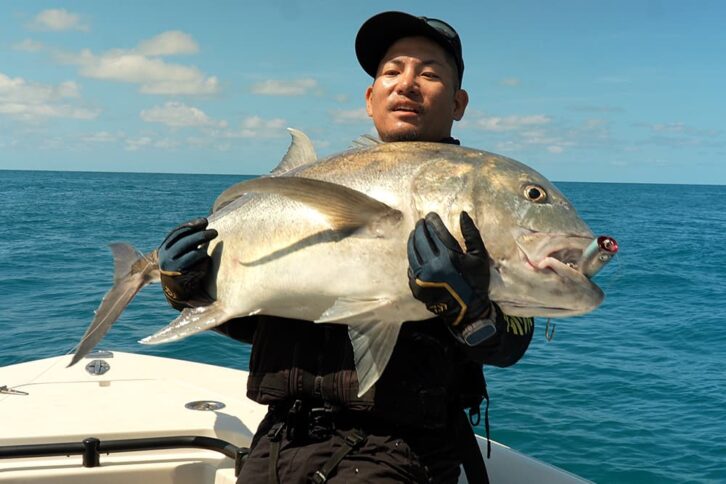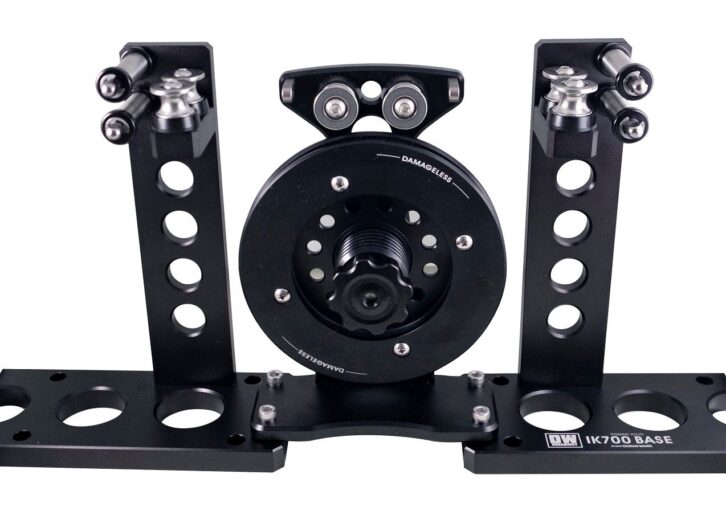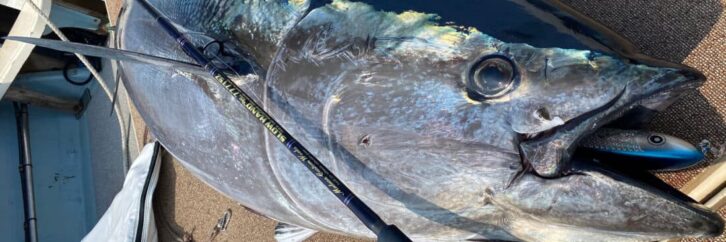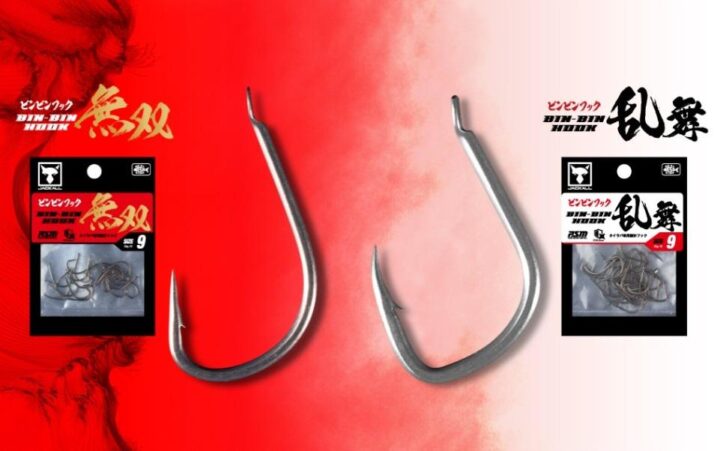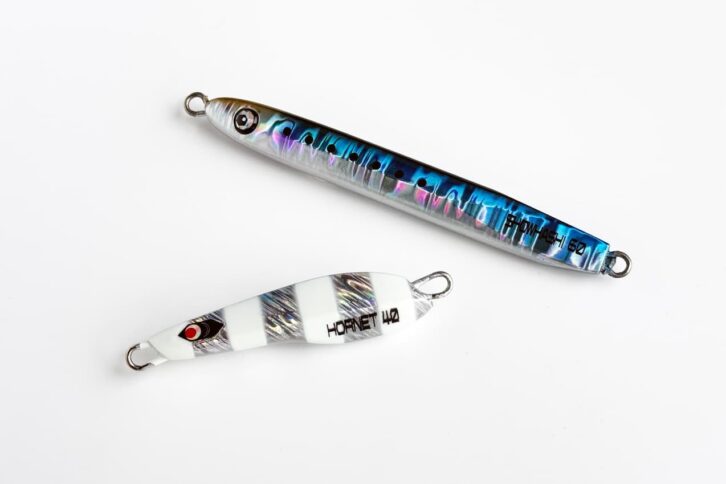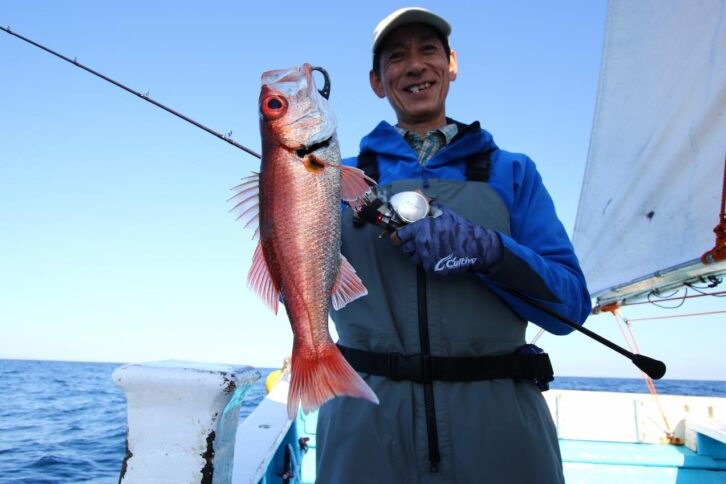Serialization: Kei Hiramatsu's Offshore World vol.14
Offshore Real Fishing.Fishing with friends off the southern coast of the Izu Islands!We went after kampachi, sunfish, and yellowfin tuna.
Since I wrote an article explaining the tackle for Mikurashima in June, I have not been able to report on the fishing results due to two bad weather conditions and no catches of targets. This time, I fished off the southern coast of Izu, which I have been thinking of fishing along with Mikurashima, on the Moriryu Maru of Izu Ajiro, which has always been a great help to me on my Mikurashima fishing trips. It was a fishing trip organized by Goldic, the store he runs. Yellowfin are starting to come up well in Sagami Bay, and dolphinfish are also getting hot. Summer is finally in full swing! I would like to report on the actual fishing in the southern Izu area.

INDEX
Set sail for Izu Minami Offshore.
The members of this fishing trip gathered at Ajiro Port in Higashi Izu after 2:00 p.m. and boarded the boat at 3:00 p.m. The boat was the Moriryu Maru. The boat is the Moriryu Maru. The boat is the Moriryu Maru, an Izu fishing expedition boat that offers a wide variety of fishing, including not only lure fishing, but also swimming fishing and family fishing in the surrounding waters. The captain and his wife have been friends with us for a long time, and we can trust them. This time, we planned a fishing trip to celebrate the anniversary of Goldic, and invited both experienced anglers and beginners. We chose the southern offshore area because we could see fish off the south coast of Mikurajima. We targeted yellowfin, bonito, sunfish, and kampachi. When the surface layer became lively, we chased yellowfin tuna, and used metal jigs to catch them when they reacted around the rapids. It is a three-hour trip from Ajiro Port to the Toshi Island area, which is the first area off the south coast. The anglers assembled in their air-conditioned cabins and began their journey.
After taking a nap, the sound of the engine changed and we knew we had arrived at the point. When they went outside, they saw waterfowl flying around near the surface of the water. Then there is a splash. The birds rush around it. To the right and left, waterfowl are moving in violent flocks. Ahead of them, Toshima Island stood majestically. Tidal currents collide, and whitecapsed waves draw a line.
At 6:00, the boat slowly set the point and began announcing the start of fishing. The depth was 90 meters, and yellowfin seemed to be reacting in the middle layer, so “Be careful when you retrieve the jig! Be careful when retrieving the jig! I started by dropping a 200g Keijig Sharp. Even in areas with strong tidal currents, I did not feel any stress with the Kay Jig Sharp because of its rear-weighted shape. The boat was not set up with a spanker, but rather a boat with a dotted line. This is because there is a conflict with the other anglers who are casting at the water’s edge. If we put up a spanker, it would be difficult to cast. If you are using the dotella current, you can catch the surface of the wind, so you can cast on the starboard side and cast the metal jig on the port side. If there was no wind, there was nothing to worry about, but the wind was unstable from the morning. This is how the fishing started.
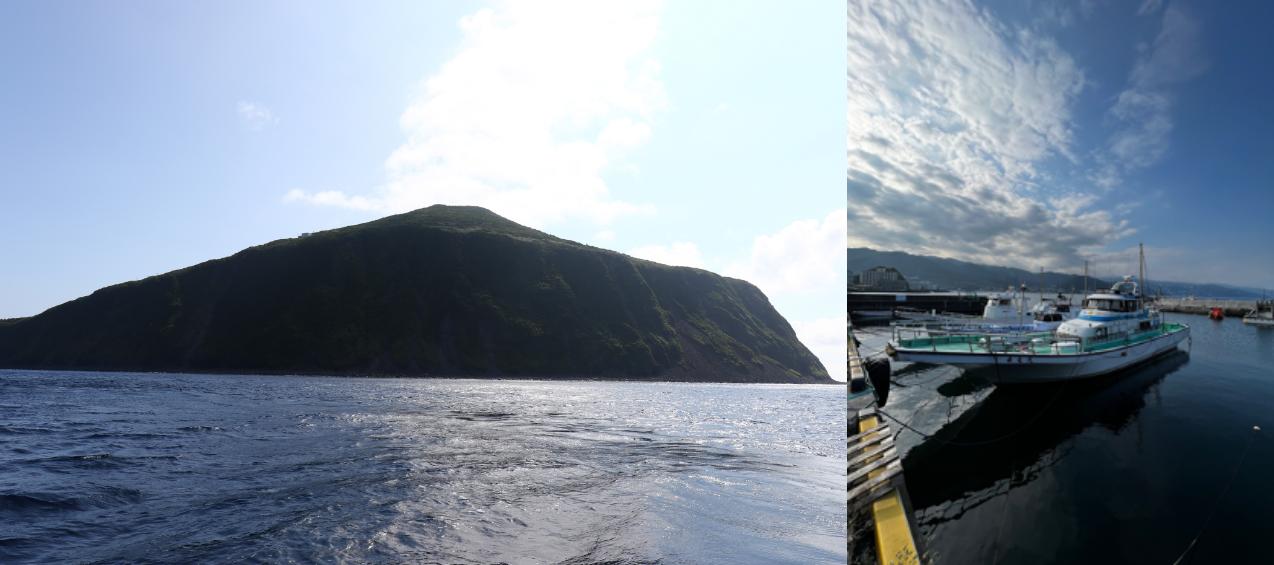
This time, we were taken care of by the Moriryu Maru of Higashi Izu Ajiro Minami, which we have been taking for many years. They have been giving dreams to many anglers not only in the local waters but also in petit expeditions off the southern coast of Izu and Mikurajima Island. The Toshi Island area we explored this time can be explored because the Moriryu Maru has permission from Toshi Island.
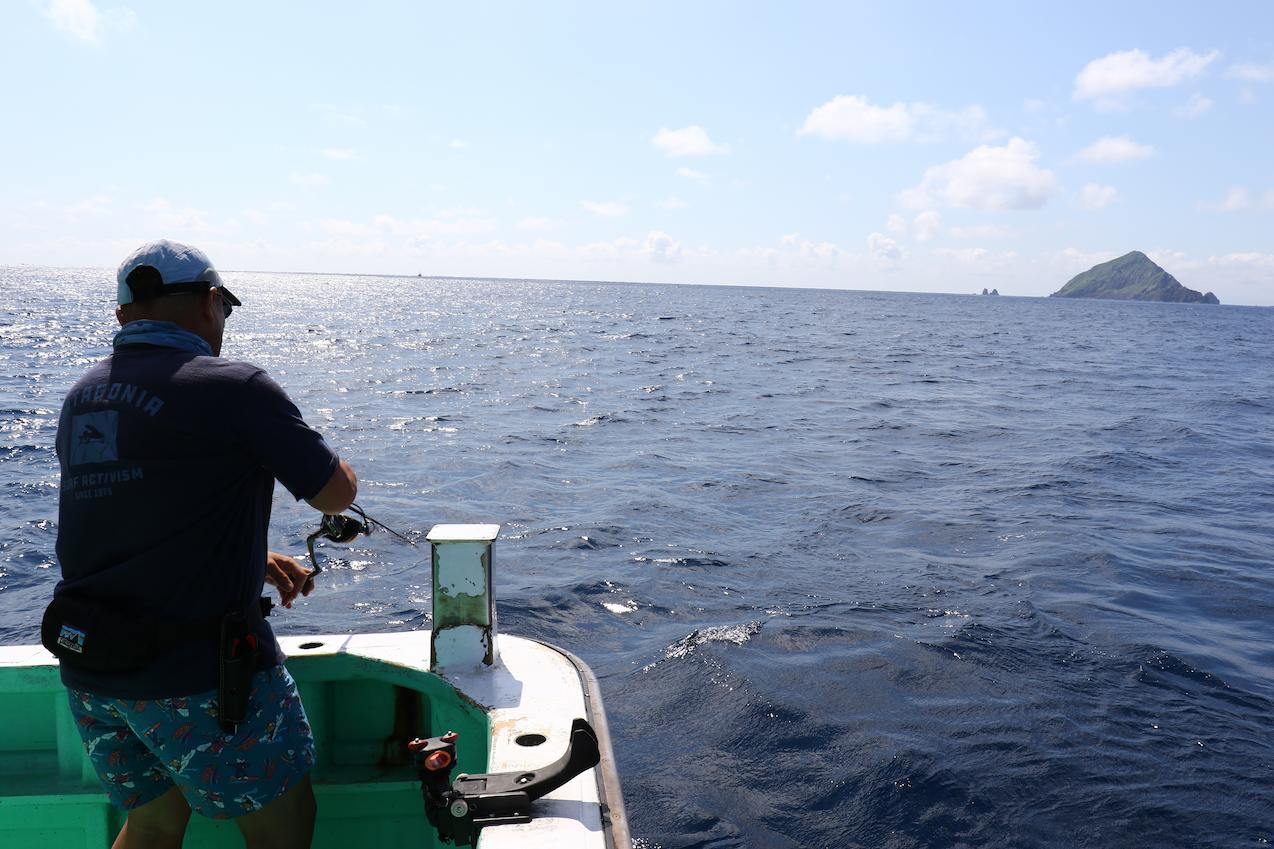
Casting anglers were lined up in the middle of the boat, and jigging anglers were lined up on the starboard side. Yellowfin tuna were in the middle layer, while yellowfin tuna and kanpachi were migrating around the bottom.
How to target mainly bluefish by jigging.
The surface layer was full of signs of yellowfin. Having experienced many bluefish bites in the past at such times, I carefully probed the area around the bottom with a metal jig. The captain announced that there was a reaction of bluefish on the bottom and tuna moving in the middle layer. I was concerned about the yellowfin splashes, but I let the jig on the bottom tell me what was moving. Jigging at a depth of almost 100m, I felt I needed more metal jig weight, so I changed from Kay Jig Sharp 200g to Gummy 250g. It went down to the bottom without any stress. However, I soon found out that it was a double tide. This is difficult. The jig was moving as if it was being pulled by the lower tide even though it was a dotella current, but when it passed the middle level, I felt the resistance of the tide as if it was coming closer to the boat. The situation was extremely difficult to explore. Still, we kept on searching for bluefish, focusing on the area 30 meters from the bottom.
After 8 o’clock, the tide stopped moving. The numbers on the tide chart matched the actual conditions in the field, so I switched back to lighter weights. Naturally, the difficult current on the bottom calmed down, but on the other hand, it was a bad situation where the resistance of the tide was not applied to the jig. I eased up a little and took a slow look at the situation around me. The waterfowl that had been moving noisily were now resting on the surface of the water. Moreover, the whitecaps that used to form at the tide’s edge had become smoother. In this situation, there was really nothing I could do. I couldn’t feel the jig moving at all even when I was sucking on the metal jig.
At times like this, I would check my tackle and fix it if necessary. This time, I prepared myself with 80lb fluorocarbon leader, but anticipating the double tide on the next moving low tide, I tied a 50lb leader, considering the resistance of the tide on the leader. When the tide is complicated, a thick leader is inevitably affected. I wanted to challenge the low tide with a tackle setting that prioritized the manipulation of metal jigs at depth as much as possible. I bet on the movement of the tide in the latter half of the day.
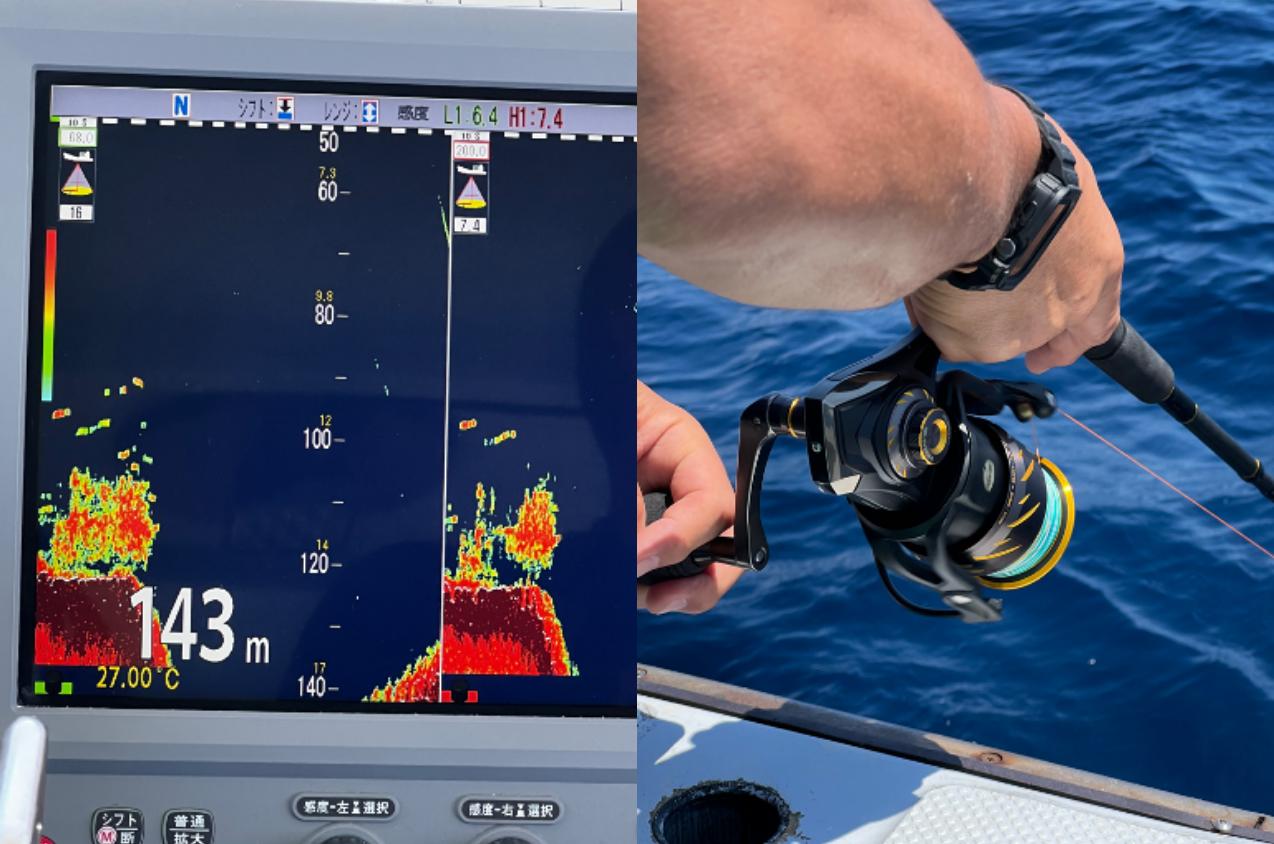
The water depth was 160 meters at the deepest point and about 60 meters at the shallowest point. In deeper water, we had to use jigs of 220g or more and even 300g or so. For kampachi and hiramasa, the target depth is about 20m from the bottom. The boat is running at an angle, so spinning tackle is easier to use.
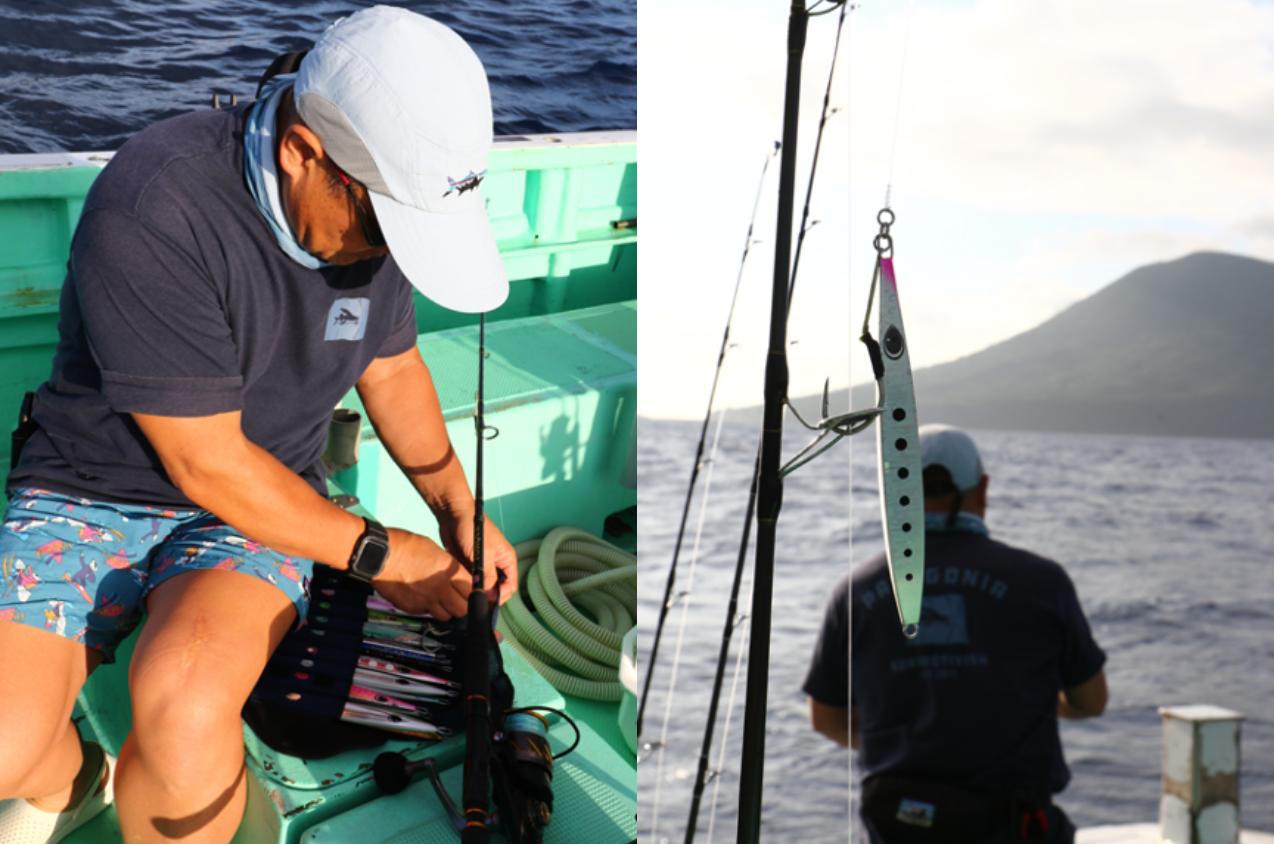
We change jigs from heavy to light according to the current. By choosing a weight that bites the tide moderately, the jig will produce more effective movement.
Hiramatsu-style must-have patterns
The tide began to move again, which was confirmed by the active movements of waterfowl. The active movements of waterfowl confirmed that the tide had begun to move again, and we could clearly sense what was going on in the water as we probed with our jigs. It looks like it’s about to bite! I said. I couldn’t help but say it out loud. The resistance of the tide to the jig is less weighty and moves better when the fishing is good. It looked like it was about to bite. At this time, the captain received a report from another boat that they had caught a sunfish weighing 18 kg and 13 kg. The bluefish were starting to move.
I searched for bluefish by carefully manipulating a jig from the bottom. Then, “Gggh! Then I got a bite. But I could not catch it. Was the bite still shallow, or was it just a small bluefish playing with the jig? Still, there were bites. This was the time to concentrate.
The yellowfin start moving again. The waterfowl become noisy. My friends who are casting are also getting fired up. The second half of the season was getting hotter as the tide began to move. At this point, the captain moved the boat for 20 minutes to a depth of 80 meters. The depth was 80m, and we targeted a wide rapids from here to 60m. The jig was Gummy 200g, so we changed to Gummy 220g. The captain announced that there was a reaction of bluefish mixed with bait on the bottom.
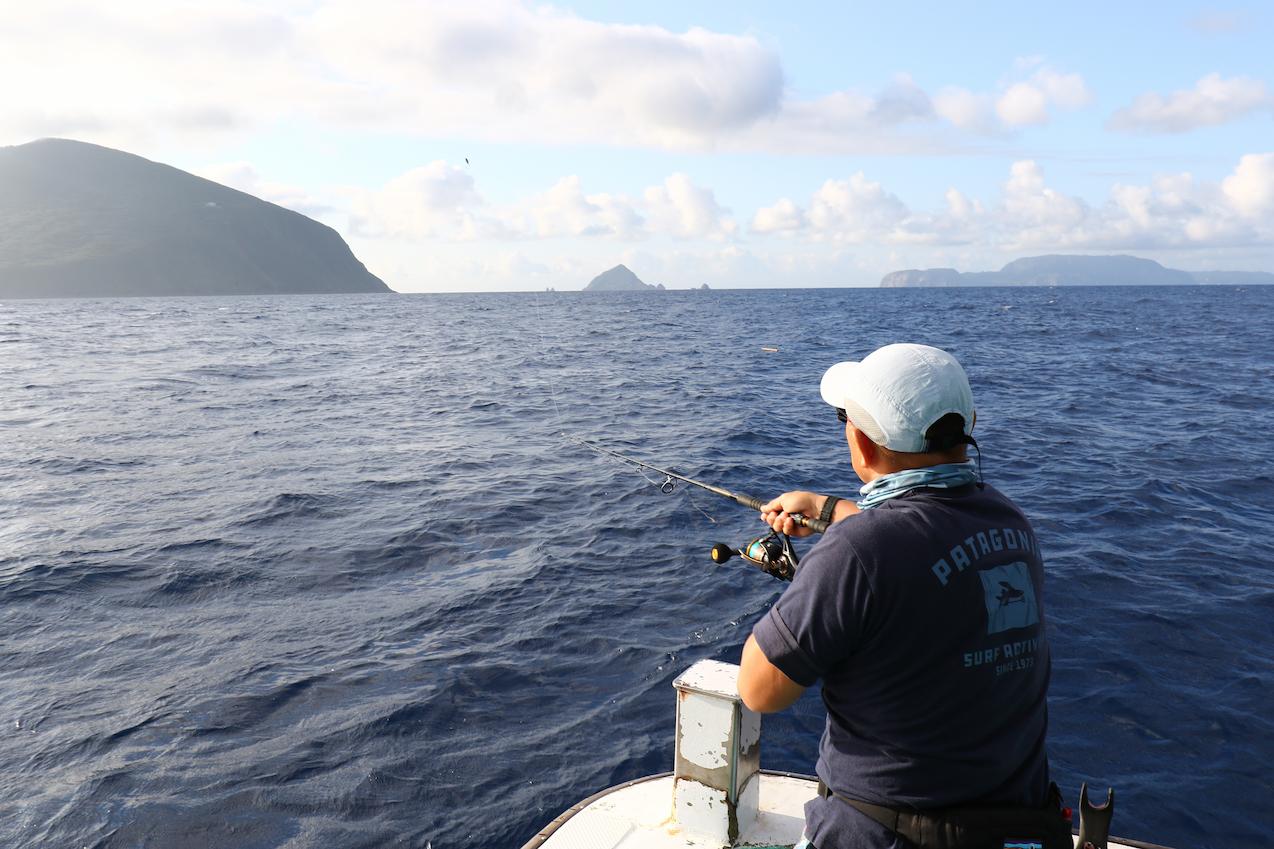
Yellowfin reaction in the middle layer and bluefish reaction on the bottom. We casted and fished widely.

Instead of searching from the bottom to the top at a constant tempo, I imagined that yellowfin tuna and kanpachi would hit near the bottom, so I searched for them with a good tempo of jerking and pausing between bites. In the layer above the bottom, anglers search for yellowfin tuna with an eye on the yellowfin. When retrieving the jig, be on the lookout for possible yellowfin hits.

In the latter half of the day, the tide begins to move and the birds start to move. Yellowfin are appearing on the surface of the water. I quickly cast a plug at the water’s edge. It looked like they were about to bite at the right time, but they were feeding on small baits and did not seem to be biting the plugs.
On the second cast, Mr. Ishikawa, who had been fishing with a metal jig on the fish’s mouth, got a hit. His rod was drawing a firm arc. It was a bluefish. The whole boat was activated by this fight. After lifting slowly and carefully, he caught a 5-6 kg kampachi. The captain’s precise judgment was right. Now, I will be next, too, I was so fired up.
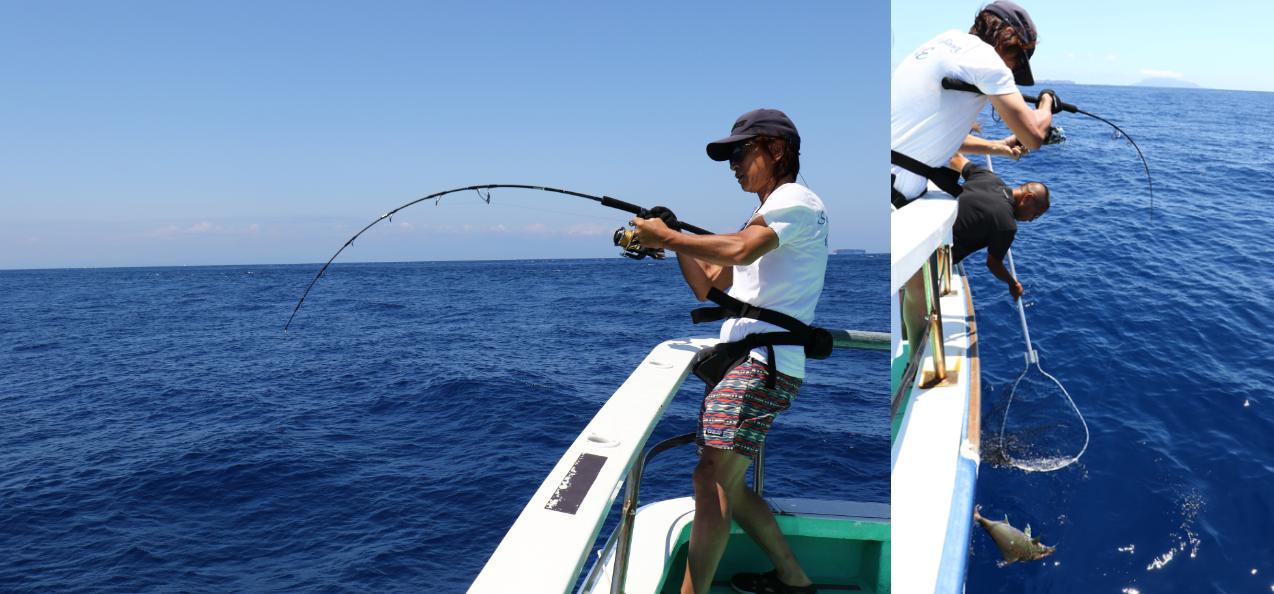
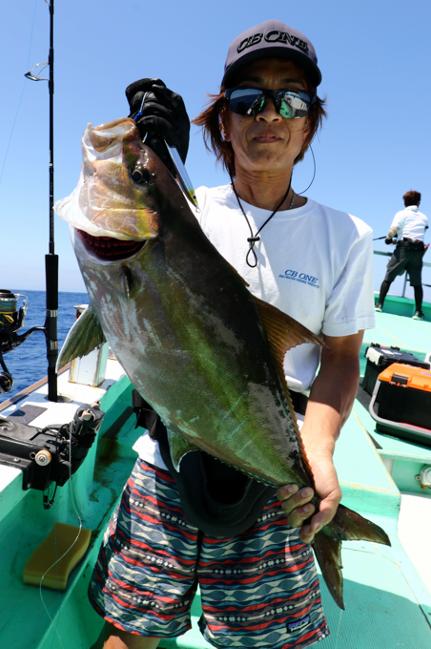
The long-awaited first hit came from Mr. Ishikawa, who was chewing on the side of the bridge. This one fish raised everyone’s spirits.
Mari Nakagawa, who has only been fishing offshore for a year, was chewing next to me. She and her husband enjoy fishing on their own boat every week, and this was their first time to try fishing offshore Izu. I asked her to sit beside me to give me some advice, but she was jigging so well without giving me any advice that I could only watch her from the side. Mari-san got a bite on the bottom and bent the rod.
The sound of the drag echoed. I was in a panic and frantically reeled in the reel handle. The line was going down, down, down. It was a bluefish. Immediately I began to support the fight. I gave her advice on the timing of lifting, pumping, and such. I could feel the tension in her grip on the rod. My friends encouraged me to keep working with the fish, saying, “You are almost there. A kampachi appeared on the surface of the water. It was a 4kg class fish, but it was her first Kampachi. I was happy to see her catch it with my Gummy 180g, and I was also happy to support her. Everyone was excited by the consecutive hits. We could still catch more. The whole boat was concentrating on dropping jigs. This is when the time is right. Then, Akio Yasutomi’s rod was squeezed hard. Mr. Yasutomi knows Izu field well and is a veteran of jigging. The fish run as soon as they hit. I knew immediately that it was a good-sized fish when I saw the rod banging on the surface of the sea. Since we were fishing on the starboard side of the boat in the dotella current, we went around from the tomo and moved to the port side. The fight was that strong. Mr. Yasutomi was trying his best to catch it. But…. He hooked out just in time. It was so frustrating. It was hard to say because it hooked out, but it was clearly a good-sized bluefish. It was the last time for us because the time had started just before the end of the day. This is the charm of the Izu Minami Offshore area, and although I didn’t get any hits, I’m sure everyone on the boat was eagerly awaiting the next one.
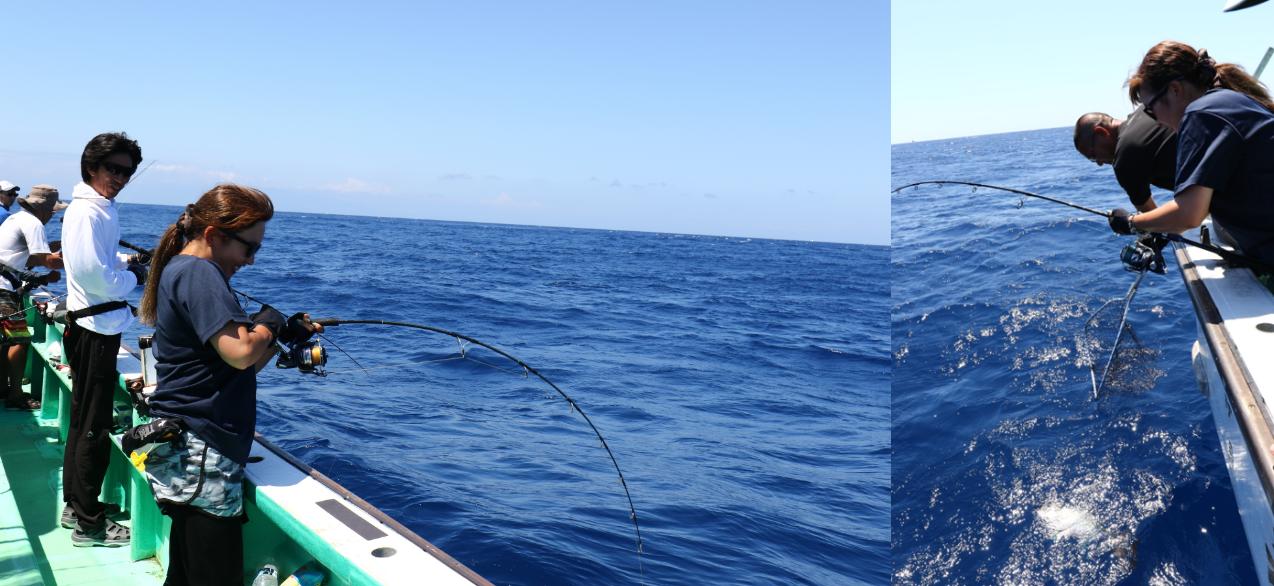

Mari Nakagawa, in her first year of offshore game, got a hit. Encouraged by everyone, she fought desperately. She successfully brought a kanpachi to the surface. The size was small, but it was her first Kampachi. She must have been very happy.
This time, we chartered a fishing trip with Goldic’s clients. I enjoyed fishing myself, but I also helped as a host for the day. I feel that the offshore areas of Izu such as Mikurashima, Toshima, and Minamioki will continue to get hotter and hotter. I started fishing offshore Izu 17 years ago when Goldic was founded, and have been pioneering jigging for bluefish such as yellowtail and kampachi with Mr. Moriyu Maru since then. In recent years, the Izu Islands offshore game has been booming in popularity due in part to the migration of large tuna. I am looking forward to continuing to explore new game fishing grounds and challenges in the future.
Jigging tackle
ROD:PENN・TORQUE PHK-63ML
PENN・TORQUE PHK-63M
REEL:PENN・Authority 6500HS
Product detail page
https://www.purefishing.jp/product/brand/penn/
LINE&LEADER:SUNLINE・X8 FULL CONTACT 4号&Tunageat No.12, No.14
LURE: K-FLAT Gummy 180g, 200g. 220g, 250g
Gummy-fat180g, 200g
KEI Jig200g KEI Jig SHARP200g, 235g, 260g
AbuGarcia Weak (Bija) Metal 180g, 200g
HOOK & PARTS: OWNER/HyperWire#7, SOLIDRING6.5mm
JS-39 JIGGER MEDIUM Blue Chaser 11/0, 9/0
Tackle inquiry
Goldic TEL:046-252-6010 (closed on Tuesdays)
HP address https://www.goldic.net/
Kei Hiramatsu Official Blog [Ibusa Diary]
https://kei-hiramatsu.com/
Kei Hiramatsu facebook
https://www.facebook.com/hiramatsu.kei.1
Twitter account
@keitanhiramatsu
(Muttering)
YouTube Kei Hiramatsu Channel
Account:keisabani
(Please subscribe to the channel)


